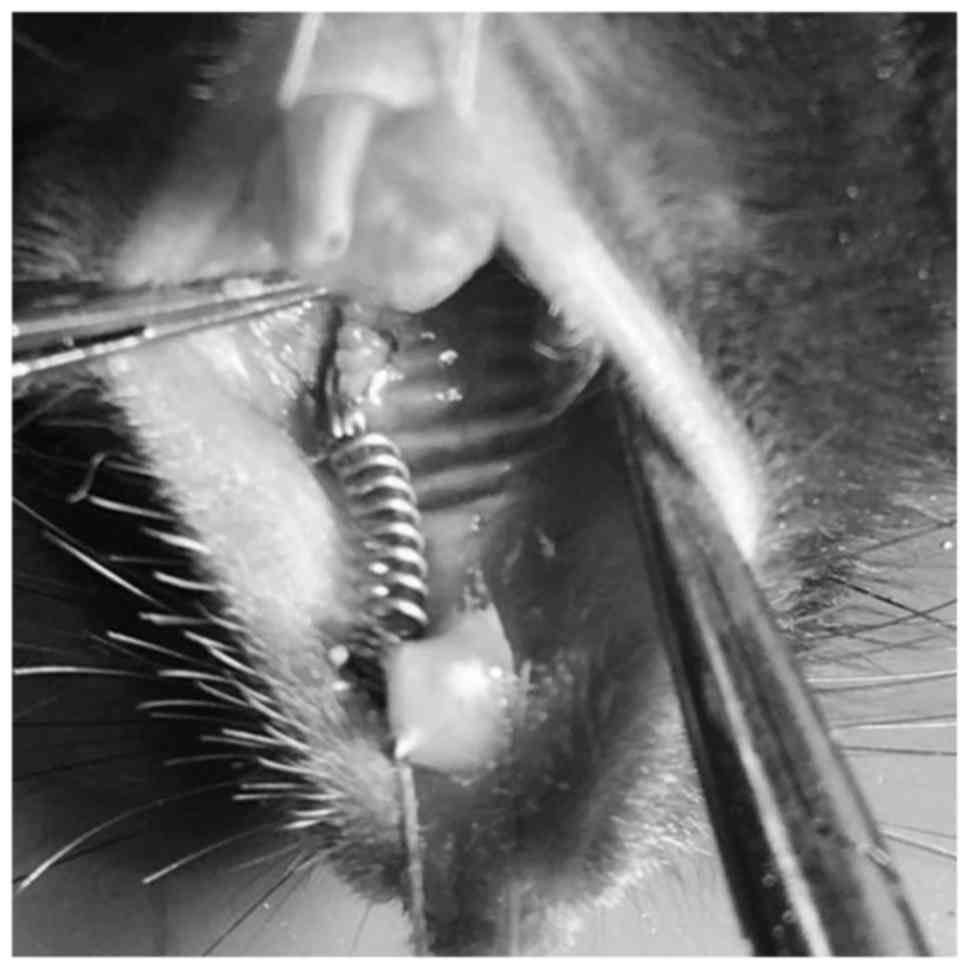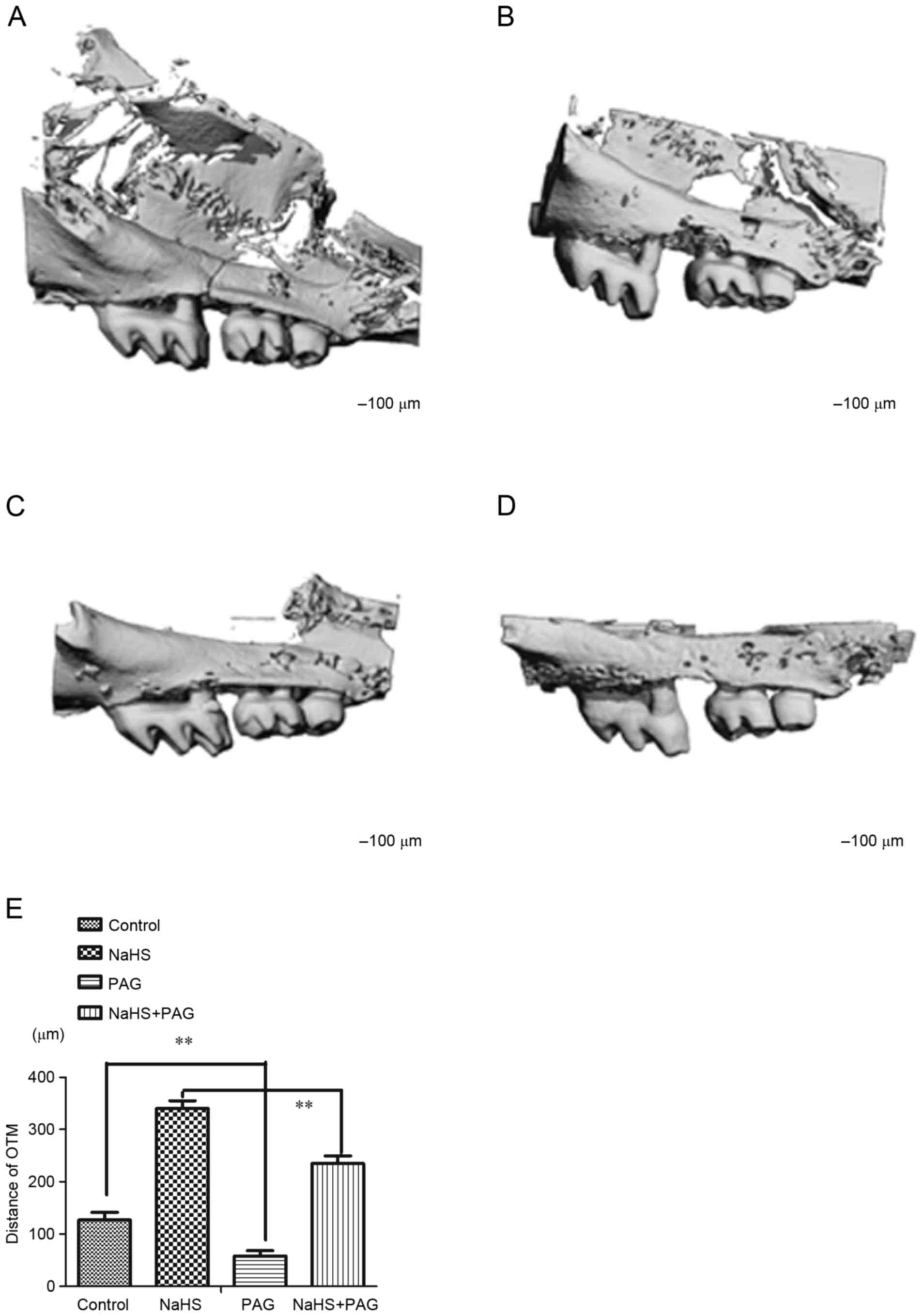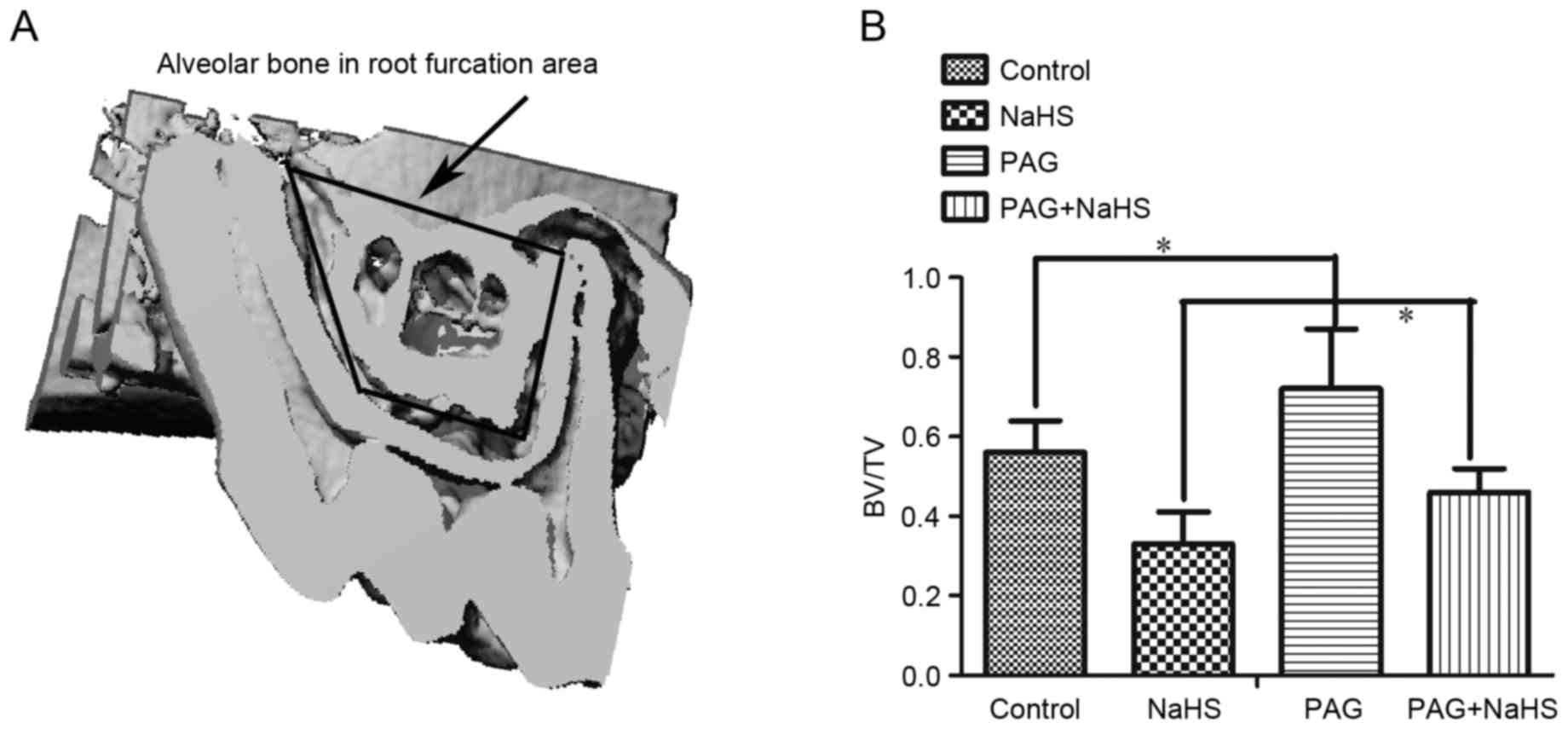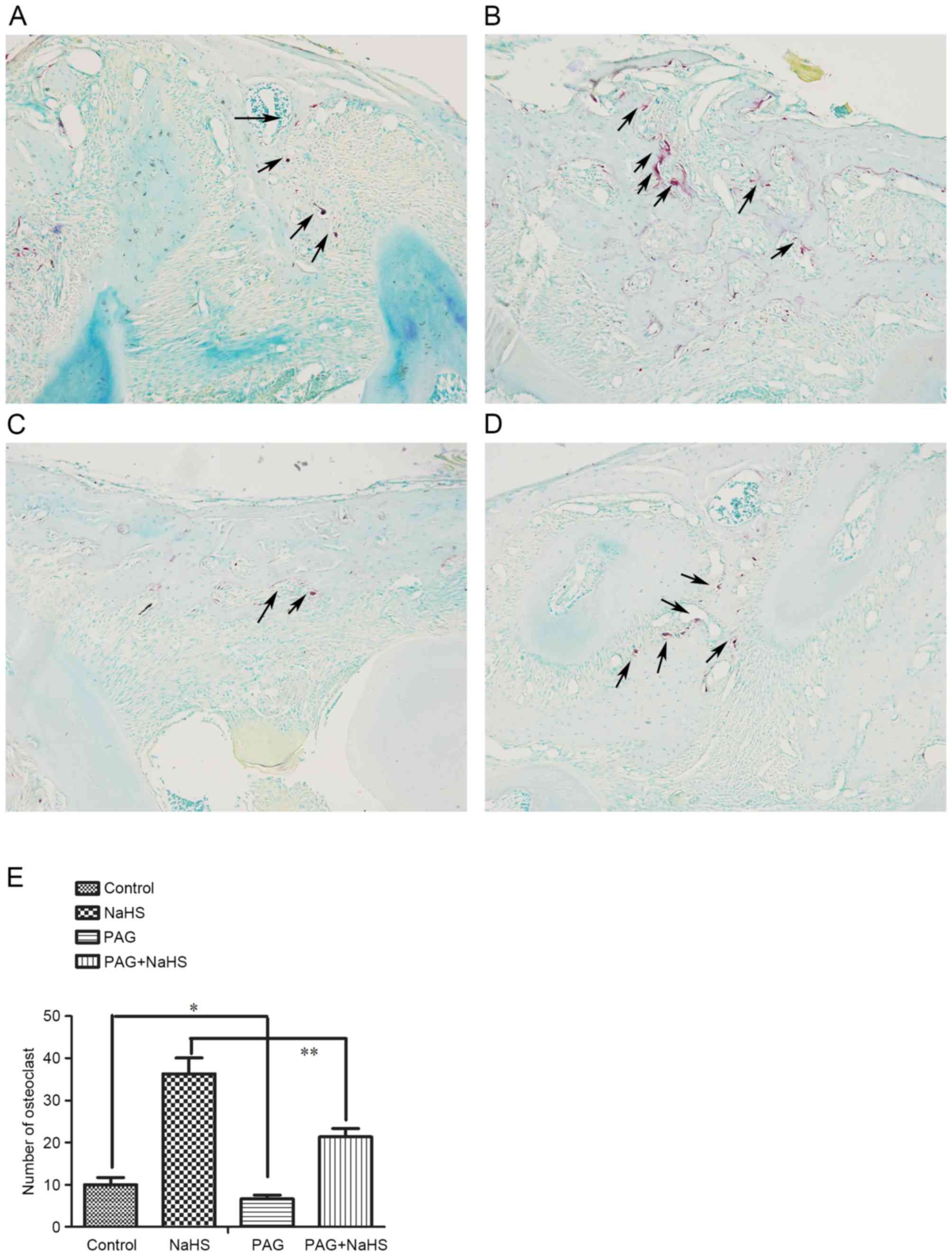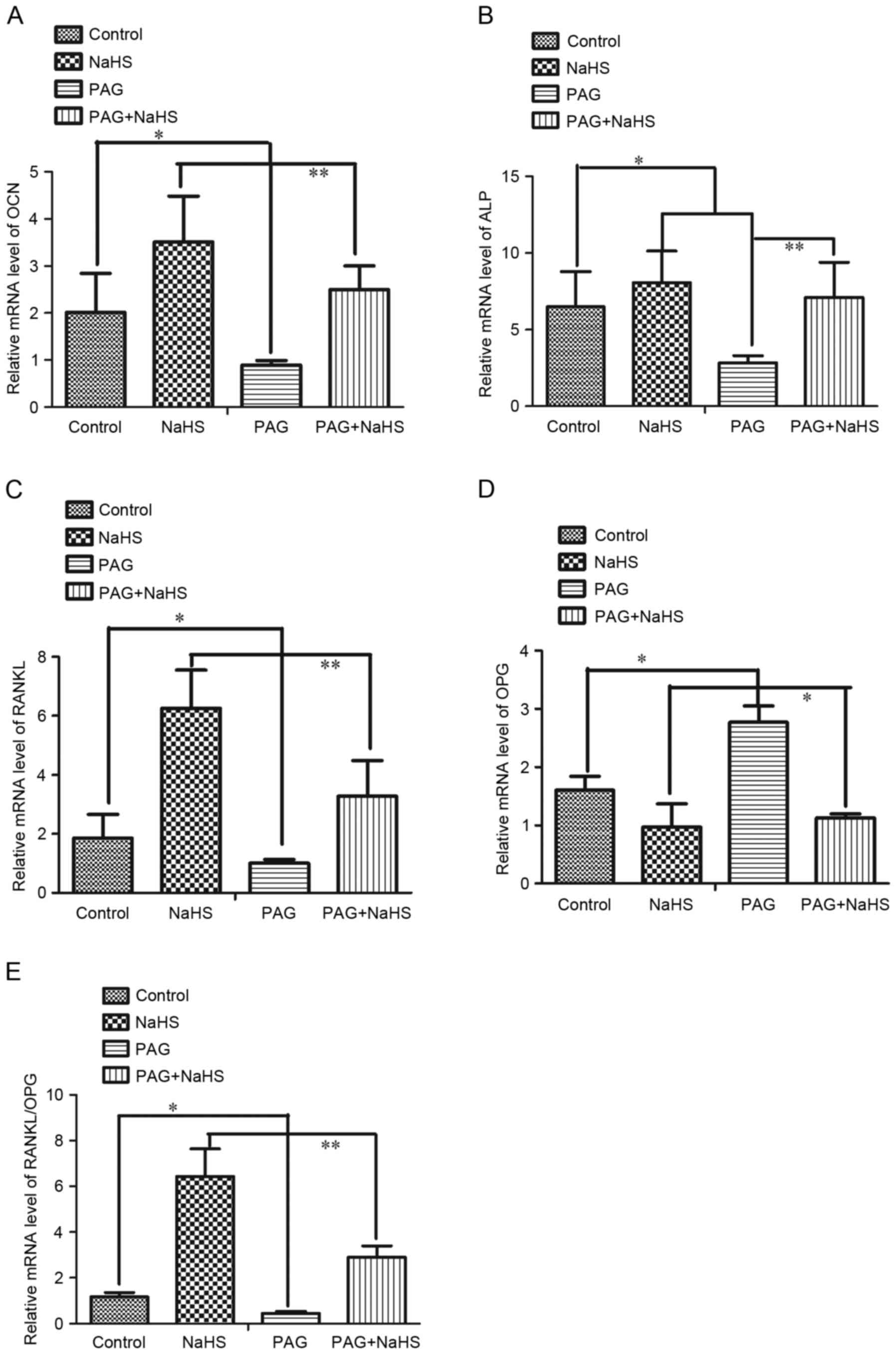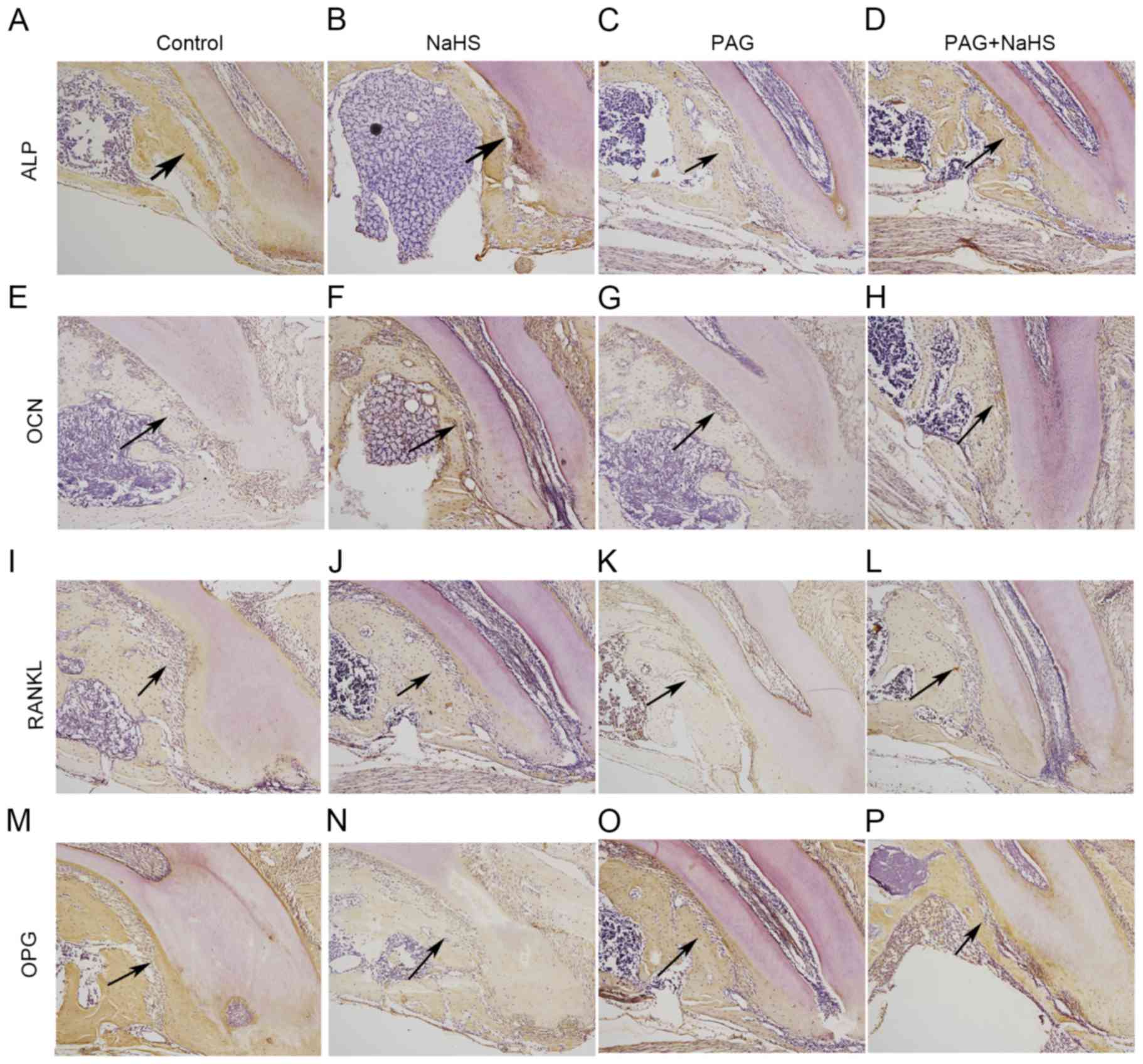|
1
|
Melsen B: Biological reaction of alveolar
bone to orthodontic tooth movement. Angle Orthod. 69:151–158.
1999.PubMed/NCBI
|
|
2
|
Krishnan V and Davidovitch Z: Cellular,
molecular, and tissue-level reactions to orthodontic force. Am J
Orthod Dentofacial Orthop. 129:469.e1–32. 2006. View Article : Google Scholar
|
|
3
|
Masella RS and Meister M: Current concepts
in the biology of orthodontic tooth movement. Am J Orthod
Dentofacial Orthop. 129:458–468. 2006. View Article : Google Scholar : PubMed/NCBI
|
|
4
|
Zahrowski JJ: Optimizing orthodontic
treatment in patients taking bisphosphonates for osteoporosis. Am
Orthod Dentofacial Orthop. 135:361–374. 2009. View Article : Google Scholar
|
|
5
|
Pichler K, Loreto C, Leonardi R, Reuber T,
Weinberg AM and Musumeci G: RANKL is downregulated in bone cells by
physical activity (treadmill and vibration stimulation training) in
rat with glucocorticoid-induced osteoporosis. Histol Histopathol.
28:1185–1196. 2013.PubMed/NCBI
|
|
6
|
Leonardi R, Loreto C, Talic N, Caltabiano
R and Musumeci G: Immunolocalization of lubricin in the rat
periodontal ligament during experimental tooth movement. Acta
Histochem. 114:700–704. 2012. View Article : Google Scholar : PubMed/NCBI
|
|
7
|
Cardile V, Musumeci G, Sicurezza E, Caggia
S, Rusu MC, Leonardi R and Loreto C: Expression of TRAIL and its
receptors DR5 and DcR2 in orthodontic tooth movement. Histol
Histopathol. 28:933–940. 2013.PubMed/NCBI
|
|
8
|
Kabil O, Motl N and Banerjee R: H2S and
its role in redox signaling. Biochim Biophys Acta. 1844:1355–1366.
2014. View Article : Google Scholar : PubMed/NCBI
|
|
9
|
Shibuya N, Tanaka M, Yoshida M, Ogasawara
Y, Togawa T, Ishii K and Kimura H: 3-Mercaptopyruvate
sulfurtransferase produces hydrogen sulfide and bound sulfane
sulfur in the brain. Antioxid Redox Signal. 11:703–714. 2009.
View Article : Google Scholar : PubMed/NCBI
|
|
10
|
Yang G, Wu L, Jiang B, Yang W, Qi J, Cao
K, Meng Q, Mustafa AK, Mu W, Zhang S, et al: H2S as a physiologic
vasorelaxant: Hypertension in mice with deletion of cystathionine
gamma-lyase. Science. 322:587–590. 2008. View Article : Google Scholar : PubMed/NCBI
|
|
11
|
Abe K and Kimura H: The possible role of
hydrogen sulfide as an endogenous neuromodulator. J Neurosci.
16:1066–1071. 1996.PubMed/NCBI
|
|
12
|
Papapetropoulos A, Pyriochou A, Altaany Z,
Yang G, Marazioti A, Zhou Z, Jeschke MG, Branski LK, Herndon DN,
Wang R and Szabó C: Hydrogen sulfide is an endogenous stimulator of
angiogenesis. Proc Natl Acad Sci USA. 106:pp. 21972–21977. 2009;
View Article : Google Scholar : PubMed/NCBI
|
|
13
|
Li L, Bhatia M, Zhu YZ, Zhu YC, Ramnath
RD, Wang ZJ, Anuar FB, Whiteman M, Salto-Tellez M and Moore PK:
Hydrogen sulfide is a novel mediator of lipopolysaccharide-induced
inflammation in the mouse. FASEB J. 19:1196–1198. 2005.PubMed/NCBI
|
|
14
|
Olson KR, Healy MJ, Qin Z, Skovgaard N,
Vulesevic B, Duff DW, Whitfield NL, Yang G, Wang R and Perry SF:
Hydrogen sulfide as an oxygen sensor in trout gill chemoreceptors.
Am J Physiol Regul Integr Comp Physiol. 295:R669–R680. 2008.
View Article : Google Scholar : PubMed/NCBI
|
|
15
|
Irie K, Ekuni D, Tomofuji T, Endo Y,
Kasuyama K, Yaegaki K and Morita M: Combined effects of hydrogen
sulfide and lipopolysaccharide on osteoclast differentiation in
rats. J Periodontol. 83:522–527. 2012. View Article : Google Scholar : PubMed/NCBI
|
|
16
|
Irie K, Ekuni D, Yamamoto T, Morita M,
Yaegaki K, Ii H and Imai T: A single application of hydrogen
sulphide induces a transient osteoclast differentiation with RANKL
expression in the rat model. Arch Oral Biol. 54:723–729. 2009.
View Article : Google Scholar : PubMed/NCBI
|
|
17
|
Su Y, Liu D, Liu Y, Zhang C, Wang J and
Wang S: Physiologic levels of endogenous hydrogen sulfide maintain
the proliferation and differentiation capacity of periodontal
ligament stem cells. J Periodontol. 86:1276–1286. 2015. View Article : Google Scholar : PubMed/NCBI
|
|
18
|
Liao C and Hua Y: Effect of hydrogen
sulphide on the expression of osteoprotegerin and receptor
activator of NF-κB ligand in human periodontal ligament cells
induced by tension-force stimulation. Arch Oral Biol. 58:1784–1790.
2013. View Article : Google Scholar : PubMed/NCBI
|
|
19
|
Jiang Z and Hua Y: Hydrogen sulfide
promotes osteogenic differentiation of human periodontal ligament
cells via p38-MAPK signaling pathway under proper tension
stimulation. Arch Oral Biol. 72:8–13. 2016. View Article : Google Scholar : PubMed/NCBI
|
|
20
|
Cao H, Kou X, Yang R, Liu D, Wang X, Song
Y, Feng L, He D, Gan Y and Zhou Y: Force-induced Adrb2 in
periodontal ligament cells promotes tooth movement. J Dent Res.
93:1163–1169. 2014. View Article : Google Scholar : PubMed/NCBI
|
|
21
|
Yan Y, Liu F, Kou X, Liu D, Yang R, Wang
X, Song Y, He D, Gan Y and Zhou Y: T cells are required for
orthodontic tooth movement. J Dent Res. 94:1463–1470. 2015.
View Article : Google Scholar : PubMed/NCBI
|
|
22
|
Schmittgen TD and Livak KJ: Analyzing
real-time PCR data by the comparative C(T) method. Nat Protoc.
3:1101–1108. 2008. View Article : Google Scholar : PubMed/NCBI
|
|
23
|
Long H, Pyakurel U, Wang Y, Liao L, Zhou Y
and Lai W: Interventions for accelerating orthodontic tooth
movement: A systematic review. Angle Orthod. 83:164–171. 2013.
View Article : Google Scholar : PubMed/NCBI
|
|
24
|
Nimeri G, Kau CH, Abou-Kheir NS and Corona
R: Acceleration of tooth movement during orthodontic treatment-a
frontier in orthodontics. Prog Orthod. 14:422013. View Article : Google Scholar : PubMed/NCBI
|
|
25
|
Kau CH, Kantarci A, Shaughnessy T,
Vachiramon A, Santiwong P, de la Fuente A, Skrenes D, Ma D and
Brawn P: Photobiomodulation accelerates orthodontic alignment in
the early phase of treatment. Prog Orthod. 14:302013. View Article : Google Scholar : PubMed/NCBI
|
|
26
|
Kau CH: A radiographic analysis of tooth
morphology following the use of a novel cyclical force device in
orthodontics. Head Face Med. 7:142011. View Article : Google Scholar : PubMed/NCBI
|
|
27
|
Nishimura M, Chiba M, Ohashi T, Sato M,
Shimizu Y, Igarashi K and Mitani H: Periodontal tissue activation
by vibration: Intermittent stimulation by resonance vibration
accelerates experimental tooth movement in rats. Am J Orthod
Dentofacial Orthop. 133:572–583. 2008. View Article : Google Scholar : PubMed/NCBI
|
|
28
|
Wilcko WM, Wilcko T, Bouquot JE and
Ferguson DJ: Rapid orthodontics with alveolar reshaping: Two case
reports of decrowding. Int J Periodontics Restorative Dent.
21:9–19. 2001.PubMed/NCBI
|
|
29
|
Ciacli C and Puşchiţă M: RANKL/RANK/OPG
molecular complex-control factors in bone remodeling in psoriatic
arthritis. Rev Med Chir Soc Med Nat Iasi. 115:354–360.
2011.PubMed/NCBI
|
|
30
|
Simonet WS, Lacey DL, Dunstan CR, Kelley
M, Chang MS, Lüthy R, Nguyen HQ, Wooden S, Bennett L, Boone T, et
al: Osteoprotegerin: A novel secreted protein involved in the
regulation of bone density. Cell. 89:309–319. 1997. View Article : Google Scholar : PubMed/NCBI
|
|
31
|
Karsenty G: The genetic transformation of
bone biology. Genes Dev. 13:3037–3051. 1999. View Article : Google Scholar : PubMed/NCBI
|
|
32
|
Souza LK, Araújo TS, Sousa NA, Sousa FB,
Nogueira KM, Nicolau LA and Medeiros JV: Evidence that d-cysteine
protects mice from gastric damage via hydrogen sulfide produced by
d-amino acid oxidase. Nitric Oxide. 64:1–6. 2017. View Article : Google Scholar : PubMed/NCBI
|
|
33
|
Ivanciuc T, Sbrana E, Ansar M, Bazhanov N,
Szabo C, Casola A and Garofalo RP: Hydrogen sulfide is an antiviral
and antiinflammatory endogenous gasotransmitter in the airways.
Role in respiratory syncytial virus infection. Am J Respir Cell Mol
Biol. 55:684–696. 2016. View Article : Google Scholar : PubMed/NCBI
|
|
34
|
Liu Y, Yang R, Liu X, Zhou Y, Qu C,
Kikuiri T, Wang S, Zandi E, Du J, Ambudkar IS and Shi S: Hydrogen
sulfide maintains mesenchymal stem cell function and bone
homeostasis via regulation of Ca(2+) channel sulfhydration. Cell
Stem Cell. 15:66–78. 2014. View Article : Google Scholar : PubMed/NCBI
|
|
35
|
Qin J and Hua Y: Effects of hydrogen
sulfide on the expression of alkaline phosphatase, osteocalcin and
collagen type I in human periodontal ligament cells induced by
tension force stimulation. Mol Med Rep. 14:3871–3877. 2016.
View Article : Google Scholar : PubMed/NCBI
|
|
36
|
Itou T, Maldonado N, Yamada I, Goettsch C,
Matsumoto J, Aikawa M, Singh S and Aikawa E: Cystathionine γ-lyase
accelerates osteoclast differentiation: Identification of a novel
regulator of osteoclastogenesis by proteomic analysis. Arterioscler
Thromb Vasc Biol. 34:626–634. 2014. View Article : Google Scholar : PubMed/NCBI
|
|
37
|
Viecilli RF, Katona TR, Chen J, Hartsfield
JK Jr and Roberts WE: Orthodontic mechanotransduction and the role
of the P2X7 receptor. Am J Orthod Dentofacial Orthop.
135:694.e1–16; discussion 694–695. 2009. View Article : Google Scholar
|
|
38
|
Krishnan V and Davidovitch Z: On a path to
unfolding the biological mechanisms of orthodontic tooth movement.
J Dent Res. 88:597–608. 2009. View Article : Google Scholar : PubMed/NCBI
|



